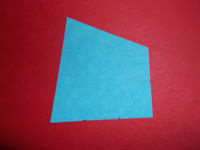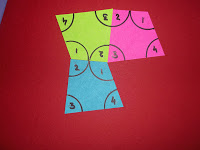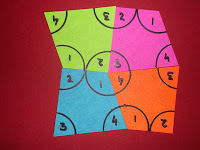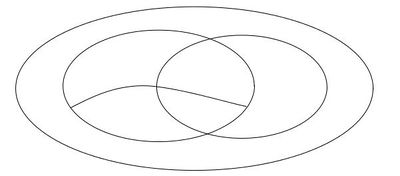Quadrilaterals
Revision as of 19:02, 17 May 2017 by KOER admin (talk | contribs) (Text replacement - "<mm>[[" to "[[File:")
Concept Map
</mm>
Text Books
Please refer the state govt. Text book of mathematics
Additional Information
Useful websites
- http://www.shodor.org/ihnteractivate/discussions/Quadrilaterals/ click here : For effective introduction to quadrilaterals.
- http://www.mathopenref.com/quadrilateral.html : Simple explanation about quadrilaterals.
- http://www.slideshare.net/muzzu1999/types-of-quadrilaterals-and-its-properties-group-4 : This website has a very good activity on properties of quadrilaterals.
- http://www.cimt.plymouth.ac.uk/projects/mepres/book8/bk8i1/bk8_1i3.htm This is a very good website for students to understand classification of quadrilaterals as per their properties.
Reference Books
- Please download 9th standard mathematics textbook of Tamil Nadu state syllabus from the following link and refer the page 89 click here
- Refer 9th standard mathematics ncert textbook from the following link click here
Teaching Outlines
- Introduction to polygons
- The meaning of quadrilateral
- Identification of various types of quadrilaterals
- Different properties of special quadrilaterals
- Construction of quadrilaterals to given suitable data
- Finding area of quadrilaterals
- Introduction to cyclic quadrilaterals
Concept # 1. Introduction to Quadrilaterals
Learning objectives
- Identifying and defining different quadrilaterals.
Notes for teachers
- This topic has its basics in polygons. Try to elicit live examples for quadrilaterals from within classroom, starting from the shape of a textbook. Show the vertices of a rectangular page. Mark three sets of four points on the blackboard, one set being collinear and other non-collinear. Call students to join the points of each set of points. This activity will introduce them to the concept of quadrilateral.
- The word quadrilateral comes from two latin words "quadri" which means a "variant of 4" and 'latera' which means 'side'. A quadrilateral is a 4 sided figure with 4 sides, 4 angles and 4 vertices.
Activity No # 1. Identifying quadrilaterals.
- Materials/ Resources needed
Flash cards of different plane figures , blank paper, Scale, colored pencils
- Estimated time: 40 minutes
- Prerequisites/Instructions, if any:
- Polygons and its elements should have been taught.
- Multimedia resources: Laptop, geogebra file, projector and a pointer.
- Website interactives/ links/ / Geogebra Applets.
Geogebra activities on Quadrilateral click here
- Process:
- Keep ready flash cards of different plane figures.
- Can give 1 set to a group of 5 children.
- Ask students to observe the plane figures individually.
- Let them use their own sorting method and sort the figures by making columns and drawing on a sheet of paper.
- Go around and have each student tell you how they sorted. Write the different ways on the board. For duplicates, begin making tallies.
- Refer to the list (some students should have mentioned that they sorted by the number of sides). Point out the number of sides/angles as the sorting rule.
- Tell students that all of the figures with four sides and four angles belong to the same family. That family is the “Quadrilateral” family.
- Explain that quadrilaterals is a family of 4 sided plane figures.
- Also tell them about the differnt types of quadrilaterals.
- Have the students to fold their paper in half and to draw a line down the middle of the paper. On one half of the paper, write the word “Quadrilaterals”. On the other half of the paper write the words “Not Quadrilaterals.” Let them sort with this given rule.
- Have students draw each of shapes on the correct side of the paper.
- When all of the students have drawn on their papers, ask them if they can recognise any of the special quadrilaterals and if they can name them.
- Next the teacher can show them the geogebra file and formally introduce the naming of quadrilaterals.
- Developmental Questions:
- What type of figures are these ?
- What are plane figures ?
- Name the parts of the figures ?
- What are polygons ?
- Are all figures the same ?
- What differences do you notice in the figures.
- By which parameter are you sorting ?
- Evaluation
- What do all of your quadrilaterals have in common?
- Why did you put the hexagon on this half of the page?
- Can you combine simple shapes to make different quadrilaterals?
- Question Corner
Colour the quadrilaterals in this home and try naming them.(Done by Naveen kumar of hassan)

Concept # 2.Properties of quadrilaterals
Learning objectives
- There are certain characteristic properties by which a quadrilateral is identified.
- A quadrilateral is a plane closed figure having 4 sides and 4 angles.
- The sum of all 4 interior angles of any quadrilateral always equals to 360 degrees.This is called interior angle sum property of a quadrilateral.
- The sum of all 4 exterior angles of any quadrilateral equals 360 degrees. This is called exterior angle sum property of the quadrilteral.
- The opposite angles of any quadrilateral are supplementary.
- If any 3 angles of a quadrilateral are known the fourth angle can be found using angle sum property.
Notes for teachers
Activity No # 1. Angle sum property of a quadrilateral.
- Estimated Time : 40 minutes.
- Materials/ Resources needed : colour papers, scale , compass, pencil and scissors.
- Prerequisites/Instructions, if any
- The students should have the knowledge of constructing quadrilaterals.
- They should have the skill of drawing and measuring angles.
- Multimedia resources
- Website interactives/ links/ / Geogebra Applets:
This activity has been taken from the website :http://mathematicsvillage.blogspot.in/search/label/Activity
- Process:
- Draw a Quadrilateral ABCD on colour chart Sheet .
- Cut such four Quadrilaterals on four different sheets.
- Mark <A as <1 , <B as <2 , <C as <3 and <D as <4 on each quadrilateral as shown in fig .
- Arrange all four angles of quadrilateral one from each colour at one point.
- What you observe ?
- It forms a complete angle i.e 360 degrees.
- This shows that sum of all angles of quadrilateral is 360 degrees.
- Developmental Questions:
- What is a quadrilateral ?
- How many angles does a quadrilateral have ?
- What is the sum of 4 angles of the quadrilateral according to your findings.
- Evaluation:
- What would be the sum of opposite angles of a quadrilateral ?
- Question Corner:
- What can you say about the four angles in a regular quadrilateral ? Give an example for regular quadrilateral.
- Try proving this property in case of concave quadrilaterals as well.
Activity No # 2. "I have - Who has ?"
- Estimated Time : 40 minutes
- Materials/ Resources needed :
- Flash cards written with properties of different quadrilaterals,
- Flash cards with figures of different quadrilaterals.
- Flash cards with names of different quadrilaterals.
- Prerequisites/Instructions, if any
- The students should know the properties of different quadrilaterals.
- This can be done as a revision activity for properties of quadrilaterals.
- The students should know the types of quadrilaterals.
- Multimedia resources
- Website interactives/ links/ / Geogebra Applets :
This activity has been shared by Shashidhar Savadi of Hassan from the website http://www.geogebra.org/en/upload/files/MSP/HarryMarshall/Investigating_Quadrilaterals.pdf
- Process:
- Students are divided into six groups. Each group is given 3 cards which have a figure of the shape, definition and a vocabulary word cards.
- However, the word, figure and definition on each card do not go together. A student from the first group says, “Who has a quadrilateral with opposite sides congruent and parallel and all right angles?” Each group then looks to see if they have the card with the vocabulary word that matches the definition and also for the card that has the drawn figure.
- Each definition is read twice so that all students have a chance to fully grasp the meaning. Ideally, a student from the group with the shape that has been defined then raises his/her hand to answer; in this case, the correct response is, “I have a rectangle”. and drawing of the rectangle.
- The game continues until all cards are read and matched.
- This activity allows a teacher to discuss misconceptions and non-examples when students answer incorrectly.
- Developmental Questions:
- What does the property say about angles ? number of sides ? and diagnols ?
- Recall quadrilateral which shares some of the mentioned properties ?
- Evaluation:
- As the properties of each quadrilateral are read out through the course of the activity the teacher can cross question "why do you think it is ........... quarilateral only why not ................ and so on thus eliciting the reasoning from students.
- Question Corner:
- Make a list of types of quadrilaterals and their properties.
- Draw venn diagram of quadrilaterals taking properties of quadrilatrals as set elements.
Concept #3. Types of quadrilaterals
Learning objectives
- Quadrilaterals are of different types.
- Grouping is made based on the four angle measures and/or sides.
- Each type is recognised with its characteristic properties.
- The types include regular, non-regular; convex, concave; parallelogram (square, rectangle, rhombus,) and non-parallelograms (trapezium and kite).
Notes for teachers
- This activity can be done after teaching the students about different types of quadrilaterals and their properties.
- This will help clarify similarities and differences between different quadrilaterals.
- Can do in group of 3 students to enable discussions.
Activity No # 1.Venn diagrams of quadrilaterals
- Estimated Time : 40 minutes.
- Materials/ Resources needed:
Paper, pencil, eraser.
- Prerequisites/Instructions, if any
- The students should have been introduced to quadrilaterals, their properties and types.
- Multimedia resources
- Website interactives/ links/ / Geogebra Applets:
This activity has been taken from the website :https://pantherfile.uwm.edu/ancel/www/MATH%20277%20FALL%202013/LESSONS/UNIT%203/277.16.pdf
- Process:
- There are 6 regions in the above venn diagram.
- The teacher can ease the activity by having an initial round of oral discussion in the previous classes such as every parallelogram is a rectangle if and only if it has ........
- Every quadrilateral is a kite if it has .........
- Rectangles, squares and rhombus are all .........
- A square is a special type of ..............
- When the students are fairly comfortable, the teacher can ask the students to group the different types of quadrilaterals in the approprriate places of the venn diagram as per their properties.
- After all the groups complete the activity the teacher can ask them to present on the black board and clarify.
- Developmental Questions:
- Ask the students to discuss properties among the group and do the venn diagram.
- Evaluation:
- Name the universal set here.
- Name all the subsets.
- Question Corner
- Draw a flow chart of types of quadrilaterals.
Fun Corner
- Math is fun [[1]]




